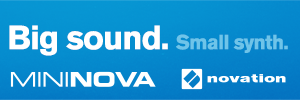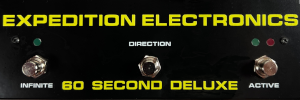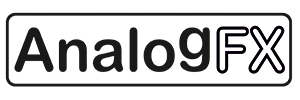Showing posts sorted by date for query Pro Synth Network. Sort by relevance Show all posts
Showing posts sorted by date for query Pro Synth Network. Sort by relevance Show all posts
Friday, July 14, 2023
Pro Synth Network LIVE! - Episode 171 with Special Guests, Dan & Mitchell from Cherry Audio!
video upload by Pro Synth Network
"Music Technology Discussion with Rob Puricelli, Kent Spong and our very special guests, Dan Goldstein & Mitchell Sigman of Cherry Audio!
This week we're delighted to welcome back Dan & Mitchell of Cherry Audio, a company that in the last few years has grown its reputation for quality, affordable and quite excellent software synths that emulate some amazing synthesizer classics such as the ARP Quadra, Novachord, Jupiter 4 and 6 as well as classics like the Memorymoog, Synthex, GX1/CS80 and Polymoog, plus their own Dreamsynth & Sines!
Join us to hear all about the latest synth to be added to their collection, the Octave Cat!"
Thursday, June 29, 2023
Synclavier Digital's Regen Gets Wider Release
video upload by Synclavier Digital
Regen Tutorials
Regen Quickies
You can find additional posts featuring demos of the Regen here.
Press Release follows:
 "Synclavier Digital releases regenerated Synclavier® II trailblazer as timeless Regen desktop synthesizer bolstered by present-day DSP developments
"Synclavier Digital releases regenerated Synclavier® II trailblazer as timeless Regen desktop synthesizer bolstered by present-day DSP developments NOVA SCOTIA, CANADA: soft-launched late last year to widespread critical acclaim at the Synthplex® synthesizer expo and electronic music festival hosted at the Marriott Convention Center in Burbank, CA, USA with pre-orders opening for fulfilment in 2023, timeless synthesis product manufacturer Synclavier Digital is proud to announce wider availability of Regen — released as a desktop synthesizer that is, in short, a real regeneration of New England Digital’s seminal Synclavier® II digital synthesizer that took the pro audio industry by storm when introduced in its initial incarnation in 1980 (evolving beyond that to blaze more technological trails with polyphonic sampling and, ultimately, DAW — Digital Audio Workstation — capabilities well before that term was invented, even), extended and enhanced to take advantage of the increased computing power available today to make it as compelling in a modern setting as the prohibitively pricey original did during its time (finding favour with top-tier film composers, record producers, and recording artists), while the considerable cost and size reductions associated with Regen’s present-day design criteria conversely position it well within reach of (almost) anyone — as of June 29…
Monday, December 12, 2022
Physical Synthesis Cicada Acoustic Vibration Synthesizer & Nymph Eurorack Module Update
video upload by Physical Synthesis

You might remember the Physical Synthesis Cicada - Acoustic Vibration Synthesizer posted back in April of 2021 - you'll find a playlist of demos there. The initial run was sold out. They are now teaming with USA-based distributor Electro Distro on a new run of Cicadas as well as a Nymph eurorack module.

The press release follows:
NEW YORK, NY, USA: having sold out of its initial production run, unique products-producing hardware startup Physical Synthesis is proud to announce that it is working with San Clemente, CA, USA-based distributor Electro Distro’s growing global network of dealers (https://www.electro-distro.com/dealers) to bring its game-changing Cicada — an ‘acoustic synthesizer’ that transforms electronic signals into physical vibrations that can be fully manipulated before being reconverted back into a new, never-heard-before electronic sound — to a wider audience in advance of Nymph, its upcoming Eurorack module…
It is fair to say that every once in a while, a moment comes along whereby human interaction with sound changes completely. Cicada is effectively one of those moments — one of those new instruments that moves the needle in music technology. Indeed, it is pioneered by unique products-producing hardware startup Physical Synthesis as an ‘acoustic synthesizer’ that transforms electronic signals into physical vibrations that can be fully manipulated before being reconverted back into a new, never-heard-before electronic sound. Says company founder Spencer Topel: “Cicada was the first step in introducing physical synthesis methods to the synth community; it is an award-winning interface that really lets musicians explore microscopic sounds with precise control.” Clearly, Cicada made musical waves when winning the Judge’s Special Award at the Guthman Musical Instrument Competition 2022, hosted by Georgia Tech School of Music — one of the few schools in North America that offers Music Technology as a major in undergraduate, graduate, and Ph.D levels of study — as an annual event dedicated to identifying the newest and greatest ideas in music.
Musical waves notwithstanding, ‘noise' is a subjective term; while electromechanical devices like speakers or headphones try to minimise the distortion inevitably introduced in physical systems, Cicada is designed to precisely exploit these distortion products as the basis of a new kind of synthesis. Cicada converts voltages to vibrations in a mechanical oscillator to create intermodulation — the addition of frequency content in a nonlinear system — in place of typical analogue or digital oscillators. By bringing the signal chain into a physical space, Cicada allows users to shape such content with natural, tactile gestures that truly transcend twiddling with a knob or pushing a slider. “As a violinist and composer, my experience of creating sound is highly physical,” proclaims Spencer Topel, adding: “With Cicada, I wanted to make an instrument that connects these elements, allowing musicians to produce complex, compelling sounds, but through tactile interaction.”
Insofar as actually doing what it does, Cicada receives two Eurorack-level signals that drive oscillation in a cantilevered Bridge positioned atop a Soundboard at an adjustable height. Digging deeper, distortion caused by the Bridge-Soundboard interaction adds frequency content to the input, determined by the specific qualities of the system. Self-explanatory Polycarbonate Soundboard, Foam Soundboard — made of EVA (Ethylene-Vinyl Acetate) foam, and Wood Soundboard — made of Birdseye maple — options each provide a range of resonating/filtering properties that combine uniquely with the likes of the Coral Wing Bridge — tip made of solid oak (resulting in a bright, clear tone), Coral Dual Tip Wing Bridge — tip made of premium rubber (allowing for a hard, precise attack with a balanced low-end), and Grey Wing Bridge — tip made of soft neoprene foam (resulting in a mellow, balanced acoustic effect); each pairing opens up a portal to a distinct sonic universe.
Users can dynamically change the system (and, therefore, how it is transforming signals) by adjusting the Bridge height, changing the region and degree of contact between Bridge and Soundboard, or applying pressure to either — effecting real-time, tactile timbral control, in other words. With that being said, premium vibration damping materials, such as Delrin, and custom circuitry minimise unwanted noise, allowing the intermodulation products to shine, while the output, captured by a pickup microphone positioned beneath the Soundboard, can be monitored directly, processed modularly, or recorded into a DAW (Digital Audio Workstation).
With behaviours akin to those exhibited by a traditional acoustic instrument, Cicada is highly responsive to differences in the excitation mechanism — the input signal, in other words. As an example, striking a snare drum with a stick or using it with brushes produce vastly different-sounding results; driving Cicada with quiet or loud, spectrally simple or complex, or bass- or treble-heavy signals similarly yield very different timbres.
Though Cicada is designed to work with a Eurorack setup out of the box, one of its strengths lies in its inherent flexibility. Indeed, it can just as easily receive signals from a DAW, boosted to the appropriate 5-10Vpp level via an outboard mixer. Moreover, the choice of input is completely left open to the user: an Ableton Live loop run through Cicada acting as a physical filter to provide timbral variety over time, for example; an LFO (Low Frequency Oscillator) from a Eurorack module, generating rich percussive tones on the maple Soundboard as the foundation of a beat; or a harmonically dense signal — similar to the output of a Max/MSP FM patch (which many would, without doubt, prefer to navigate physically rather than digitally) — made by moving the Bridge around the Soundboard to amplify certain harmonics and suppress others, finding a grittier sound with the Bridge barely touching or coaxing a more ethereal tone with it centred and depressed.
Endless exploration possibilities are a given, guaranteeing that any sonically-ambitious Cicada user is likely to while away the hours playing with input signals, system configurations, gestures, modulation combinations, and more.
It is hardly surprising, then, that Physical Synthesis sold out of its initial Cicada production run, really hitting a home run by counting luminaries like renowned electronic music composer and performer Hainbach — citing Cicada as being “The Tesla of electro-acoustic workstations, miles ahead of standard piezo and solenoid boxes...” — and Ableton CEO Gerhard Behles amongst its fan base, and has now turned to working with US-based distributor Electro Distro’s growing global network of dealers to bring its game-changing ‘acoustic synthesizer’ to a wider audience. “I want to bring acoustic synthesis to a wider range of musicians,” maintains Spencer Topel, before ending on a high note: “We are building some really exciting expansions of Cicada to different formats, including a Eurorack module called Nymph, which is coming soon.”
Physical Synthesis’ ‘acoustic synthesizer’ is now available as Cicada Founders Edition Extended — encompassing two dual AMPs, one PRE, one Actuator, five Bridges, three Soundboards, three Meanwell power supplies, three custom SATA Cables, and one custom Nanuk 935 Flight Case — for $2,700.00 USD or as Cicada Pro Series individual modules — starting at $79.00 USD — via San Clemente, CA, USA-based distributor Electro Distro’s growing global network of dealers (https://www.electro-distro.com/dealers) or directly from Physical Synthesis’ online Shop (https://shop.physical-synthesis.com).
For more in-depth information, please visit the dedicated Cicada webpage here: https://www.physical-synthesis.com
Saturday, November 26, 2022
Pro Synth Network LIVE! - Episode 138 with Dan Goldstein & Mitchell Sigman of Cherry Audio!
video upload by Pro Synth Network
"Music Technology Discussion with Rob Puricelli, Ben Simpson, Kent Spong and our very special guests, Dan Goldstein & Mitchell Sigman of Cherry Audio!
This week we're delighted to welcome back Dan & Mitchell of Cherry Audio, a company that in the last few years has grown its reputation for quality, affordable and quite excellent software synths that emulate some of the more quirky synthesizer classics such as the ARP Quadra, Jupiter 4 and Realistic MG-1, as well as classics like the Memorymoog, Synthex and Polymoog, their own Dreamsynth and their latest instrument GX-80!
Join us to hear the story behind the creation of GX-80, an instrument that fuses together two giants from Yamaha!
0:00 - Intros and welcomes
10:17 - Cherry Audio Interview - https://cherryaudio.com/products/gx-80
1:21:27 - Korg Collection 4 - https://www.korg.com/uk/products/soft...
1:32:59 - Virharmonic Bohemian Cello - https://www.virharmonic.com/bohemian_...
1:42:35 - Sonicware LIVEN LoFi-12 - https://sonicware.jp/pages/liven-lofi12
1:53:46 - Sonicware SmplTrek - https://sonicware.jp/pages/smpltrek
2:02:30 - Sonicware Live Stream Announcement - https://youtu.be/-_-z_J77WE0
2:05:36 - Thank yous and goodbyes"
Friday, November 11, 2022
Pro Synth Network LIVE! - Episode 136 with Special Guest, Marcus Ryle!
video upload by Pro Synth Network
"Music Technology Discussion with Rob Puricelli, Kent Spong & Ben Simpson and our special guest, Marcus Ryle!
Every now and again, we are able to persuade legends to join our show and share their stories with us. This Friday is one of those times. We are honoured to be joined by Marcus Ryle, a name so revered in synthesizer and music technology that he really needs no introduction.
Marcus will be telling us all about his history in the business, his time with Oberheim, both then and now and all the other pies he has had his finger in. Sit back and enjoy!
We appreciate your help! All donations go directly toward making the show run smoothly. If you'd like to help support our streaming platform, you can make a donation via PayPal here:
https://cutt.ly/PSN-Donate"
Friday, October 28, 2022
Pro Synth Network LIVE! - Episode 134 - Synthplex 2022
video upload by Pro Synth Network
"Music Technology Discussion with Ben Simpson, Kent Spong & Rob Puricelli!
This week, we're hoping to bring you some live coverage of Synthplex 2022 in Burbank, CA with roving reporters, Dr. Manny Fernandez and Andy 'Synthaddict'! Plenty of synths and carpet! ;-)"
Monday, October 24, 2022
GPUAudio Major Synth In the Works
Pro Synth Network LIVE! - Episode 132 with Special Guests, GPU Audio! video upload by Pro Synth Network
Some initial pics and specs below. The above is talk with GPU Audio mentioning the upcoming software synth.
"Music Technology Discussion with Rob Puricelli, Ben Simpson & Kent Spong and our special guests, GPU Audio!
This week we're joined by Jonathan & Sasha from GPU Audio, a company that is shaking up the performance of computer-based music making with their Digital Sound Processing platform that unlocks a standard GPU to handle audio production with next-gen performance capabilities. Compatible with the VST3 standard, as well as custom software, GPU Audio dramatically enhances performance by offloading processing from a computer's CPU to its GPU.
And they will be showing a WORLD EXCLUSIVE of something very new and very exciting that has been made possible by their innovative technology. DON'T MISS IT!!!
Grab the GPU Beta Plugin Suite here... https://www.gpu.audio/prosynthnetwork
0:00 - Intros and welcomes
08:30 - GPU Audio Interview
47:08 - WORLD EXCLUSIVE Reveal of 'Major', the first GPU Synth!
1:09:10 - AcousticSamples V-Horns Saxophones - https://www.acousticsamples.net/vhorn...
1:33:25 - The Rise of Akai Professional Book Kickstarter - ttps://www.kickstarter.com/projects/1135238327/the-rise-of-akai-professional
1:36:57 - LABS Electronic Antique - https://labs.spitfireaudio.com/electr...
1:39:22 - Future Retro are back under new management! - https://future-retro.com/home/
1:42:23 - Guk AI Sistema Synth - https://guk.ai/sistema-ai-synthesizer
1:46:19 - UVI Falcon updates to 2.8 - https://www.uvi.net/falcon
1:52:41 - Arturia Rendez-vous Event - https://youtu.be/lw7Mj_9STYQ
1:53:38 - Synthfest U.K. 2022 Retrospective/Thoughts
2:09:22 - Thank yous and goodbyes!"



Major’s hybrid synth engine provides you with the best of both worlds - 8 synthesizer oscillators and 8 sample based oscillators, 8 independent layers with uniquer effects chains, envelopes and independent output routing. Built-in editable plugin chains save your resources and insert slots for the library of other GPU Audio powered effects. From rich, multi-layered textures to independent bass and synth lines all within a single patch - Major makes a statement as the world’s first GPU-powered synthesizer.
-Multi Layer Hybrid Synthesizer Virtual Instrument
- 8 Independent layers with mixed audio/midi routing.
- Flexible automation for most parameters using MIDI controllers, internal modulators or host automation
- MPE enabled
- Up to 4x oversampling and up to 64 bit length for real-time or individual "bounce mode"
- Per layer:
- 8 Synth-based + 8 sample-based oscillators
- 16 voices per oscillator
- OSC: 5 Alias-free waveforms incl White Noise
- OSC: Up to 128 voices per note
- OSC: PWM for all waveforms
- OSC: Detune, Stereo Spread, Panning and Filter Routing balance
- OSC: FM modulation between oscillators
- WaveOSC: Attack and Loop Wave players
- WaveOSC: Stereo Spread, Panning and Filter Routing balance
- Two 12,18, 24db/oct HP, LP and BP filters with resonance
- Two Host-Sync LFO with 5 waveforms
- 8 Envelopes with different curves
- Internal cascade of Distortion, Chorus, EQ, Delay and Reverb with variable order
- Up to 32-step Arpeggiator with swing
- Up to 32-step Gater with swing
- Two StepLFO with up to 32 steps and swing
- Two MultiControls for easy automation
- Spectrum analyzer
- 16 modulation lines per each modulation panel
- Legato, Polyphonic and Polyphonic Legato modes
- Incredible Mass-Preset for Random Patching across all parameters, effects, layers, oscillators etc.
Friday, October 07, 2022
Modbap Introduces HUE "AUDIO COLOR PROCESSOR" Eurorack Module
video upload by Modbap Modular
Modbap Modular makes colorful Eurorack entrance at Brooklyn SYNTH+PEDAL EXPO with HUE debuting as AUDIO COLOR PROCESSOR
LOS ANGELES, CA, USA: following hot in the footsteps of Trinity, the fourth entry in its expanding Eurorack product lineup as a three-channel DIGITAL DRUM SYNTH ARRAY (as introduced at Knobcon Number Ten, a one-of-a-kind synthesizer convention held just outside of Chicago, IL, USA at the Hyatt Regency Schaumburg, September 9-11), black-owned Eurorack modular synthesis and electronic musical instrument manufacturer Modbap Modular is proud to debut HUE as its latest Eurorack entry — this time being billed as an AUDIO COLOR PROCESSOR, packing a chain of five effects (each imparting a particular coloration, tone, distortion, and/or texture to the source audio) into a 6HP- width module, making drums bang with more magnitude and melodies morph into lush lo-fi tones — at Brooklyn SYNTH+PEDAL EXPO, a free-to-the-public pop-up event of synths and guitar effect pedals, at 718 Studios, Brooklyn, NYC, USA, October 8-9…
“HUE was originally designed as the effects section for Trinity; the thought was to create an effects section that would simulate the classic, lush boom- bap and lo-fi vibes that we’ve come to love.” So says Modbap Modular founder/owner/designer Corry Banks, before continuing: “I want to bring those nostalgic textures that make things bang a bit harder and feel a bit grittier and more soulful into a single Eurorack module. HUE pairs very well with drum sources, such as Trinity, or melodic sources, such as Osiris, to further cultivate ‘that sound’. Saying that, HUE, in moderation, makes things sound more beautiful, but it can become brolic when pushed to its limits.”
Maximum (musical) muscle notwithstanding, HUE’s goal is to simply color its user’s sound — hence highlighting that the aim of its name is true, thanks to the COLOR PROCESSOR wording written across the top of its slimline front panel. Its initial concept was born out of a debate about the techniques and processes used to make drum machines sound so big, bold, and delicious. It is worth bearing in mind here, then, that the sounds that tug at the heartstrings of boom-bap, lo-fi, and, subsequently, Modbap — meaning the fusion of modular synthesis and boom-bap (or, indeed, any form of hip-hop) — are those demonstrating great texture, lush degradation, soft distortion, and big bold strokes of color.
Classic beloved drum machines were often processed with outboard gear; recorded to tape; pressed to vinyl; played over big, booming sound systems; sampled; resampled, and so on. It is no surprise, therefore, that those are the sounds that become nostalgic and reminiscent of all that the black-owned Eurorack modular synthesis and electronic musical instrument manufacturer adores about classic lo-fi boom-bap production, with HUE representing its attempt at bringing that vibe into Eurorack as a 6HP-width module.
Acting as a COLOR PROCESSOR, HUE’s effects chain signal path is as follows: DRIVE, FILTER, TAPE (saturation), LO-FI, and COMP (compressor), with the panel layout allowing for the DJ-style FILTER knob to sit in first position for ease of tweaking — LP (low-pass) when turned to the left through to HP (high- pass) when turned to the right. Digging deeper, DRIVE boosts and lightly distorts the signal, while SHIFT+DRIVE adjusts the DRIVE tone; the TAPE effect is intended to impart cassette tape saturation, while SHIFT+TAPE adjusts the intensity; LO-FI adjusts bit depth, while SHIFT+LO-FI adjusts sample rate; and, lastly, the one-knob COMP mini-pot serves as the final glue in the signal path that brings everything together. There are also DRIVE CV, FILTER CV, TAPE CV, and LO-FI CV inputs, as well as mono INPUT and OUT connections, collectively opening up a wealth of creative possibilities. Put it this way: when throwing creative modulation at it, HUE is truly a textural beast.
But best of all, HUE puts the power to shape and transform its user’s sound at their fingertips — perfect for beefing up drums while equally as magical when working on melodic content, which is exactly why it pairs so well with Trinity (https://www.modbap.com/products/trinity), the fourth entry in Modbap Modular’s expanding Eurorack product lineup as a three-channel DIGITAL DRUM SYNTH ARRAY, and Osiris (https://www.modbap.com/products/osiris), a sensational-sounding BI-FIDELITYTM WAVETABLE OSC (oscillator) module for Eurorack (introduced to widespread critical acclaim at last year’s Knobcon Number Nine). Needless to say, HUE — like its Eurorack siblings — exemplifies Modbap Modular’s musical mantra: Made for Eurorack, dope enough for boom-bap!
Expected to ship in late-October 2022, HUE is available to preorder at an MSRP (Manufacturer’s Suggested Retail Price) of $299.00 USD via San Clemente, CA, USA-based distributor Electro Distro’s growing global network of dealers (https://www.electro-distro.com/dealers) — including Sweetwater (https://www.sweetwater.com), the USA’s number one eCommerce provider of music instruments and pro audio gear — or directly via its dedicated webpage (which includes more in-depth information) here: https://www.modbap.com/products/hue
Friday, September 30, 2022
Pro Synth Network LIVE! - Episode 130 with Bob Coover of Groove Synthesis!
video upload by Pro Synth Network
"Music Technology Discussion with Rob Puricelli, Ben Simpson, Kent Spong and our very special guest, Bob Coover of Groove Synthesis!
This week we're delighted to welcome Bob Coover of Groove Synthesis, a new synth company that launched this year with their debut product, the utterly fascinating, gorgeous sounding and award winning '3rd Wave', an unashamed and unabashed homage to the late, great PPG Wave but with so much more besides. We'll be digging into the the inspiration for this machine, the credentials of those behind it and why wavetable synthesis is currently enjoying a long overdue renaissance!"
See the Groove Synthesis label below for more. You can find an earlier interview here.
Friday, August 26, 2022
Pro Synth Network LIVE! - Episode 125 with special guest, Ben 'Benge' Edwards!
video upload by Pro Synth Network
An interview with Benge aka zack dagoba. Don't miss his Vintage Synth TV episodes.
"Music Technology Discussion with Ben Simpson, Kent Spong, Rob Puricelli and special guest, Ben 'Benge' Edwards!
Ben Edwards, known professionally as Benge, is an English musician and record producer based in Cornwall, England. The main focus of his work is within the experimental electronic music field. He launched the record label Expanding Records as an outlet for his debut album 'Electro-Orgoustic Music' in 1995. His tenth solo album, released in 2008, was called 'Twenty Systems' and featured 20 individual tracks, each based around a specific synthesizer
Over the years Benge has amassed a large collection of electronic synthesisers, drum machines and studio equipment which is housed in his 'Memetune Studio Complex'. From here he writes and records his own music as well as working on his many collaborations
Since 2012, Benge has released a regular series of online solo albums via his bandcamp and iTunes pages. These albums regularly feature his "one-synthesiser-per-album" concept, whereby he limits himself to creating a full album using a single electronic music system
He's worked as a co-writer and producer with many luminaries of the Electronic Music scene, such as John Foxx, Wrangler (Stephen Mallinder), Blancmange (Neil Arthur), Creepshow (John Grant) and many others, as well as pursuing his own musical projects such as Oblong and Fader
2022 saw the launch of The Memetune Show on his YouTube channel. This show, hugely reminiscent of late 70s/early 80s BBC/PBS technology shows, is a part tongue in cheek, part serious exploration of vintage synthesizer and video production technology"
Friday, August 05, 2022
Pro Synth Network LIVE! - Episode 122 with Special Guest, Dina Pearlman!
video upload by Pro Synth Network
"Music Technology Discussion with Ben Simpson, Rob Puricelli and Kent Spong.
This week, we are so excited to welcome back Dina Pearlman!"
Website: https://alanrpearlmanfoundation.org/
Donations: https://alanrpearlmanfoundation.org/d...
Monday, July 25, 2022
Yamaha VP1 Demo - No Talking
video upload by Pro Synth Network
"This video was assembled from clips of Scott Kinsey playing a Yamaha VP1, owned by Reinhold Heil and restored by a team lead by Manny Fernandez, on Episode 120 of our live stream on Friday 22nd July 2022.
You can watch that stream here:"
Pro Synth Network LIVE! - Episode 120 - Yamaha VP1 Special
video upload by Pro Synth Network
"This week we're bringing to you a really special show!
The Yamaha VP1 is not only one of the rarest synthesizers ever made, but also one of the most unique. The VP1 was going to be Yamaha's first commercial foray into the world of physical and acoustic modelling. Utilising a free oscillation type of modelling, it was a 76 note, 16 voice modelling monster with the ability to combine multiple elements into a single patch and had dedicated external editing capabilities for an Apple G3 directly connected to it via a dedicated serial port.
Friend of the show, Manny Fernandez, has been helping Reinhold Heil restore his VP1 to working condition and now that the restoration has been completed, Manny, Reinhold and legendary jazz keyboardist Scott Kinsey, himself a VP1 fan and Yamaha professional, join us to discuss and demonstrate this remarkable instrument and its restoration process."
Sunday, January 31, 2021
February Filter Sweep YouTube Protest & a Call to any YouTube / Google Employees
Youtube claimed copyright on a synth filter sweep video by ranzee
"I can't believe we are now getting copyright claims just for performing tests on synths! Yep - all I did was a filter sweep - and BAM! Copyright Claim police came on in and took my video away (partially) from the world. This is ludicrous!"
This one was sent my way via supporting member, Synth Addict.
For those not aware, YouTube has algorithms that scan audio in videos for copyright infringement. If something is found in violation, the video is automatically unpublished. The problem? Apparently certain filter sweeps are triggering take downs. This is becoming a problem for synth demos (per ranzee above, and previously mentioned here for example). I am curious what sample is being used for the comparison. Rush's Tom Sawyer? :) Actually, Synth Addict mentioned it being a Chemical Brothers track, which does sound familiar. Anyway, if anyone out there reading this has any connections, maybe you can reach out to someone that can fix this?
For the rest of us, not sure how the following will help, but if anything it will bring some attention to the problem amongst the synth community.
via Synth Addict:
"What users can do:
Post a video on YouTube of yourself demonstrating a filter sweep on a synth or synths of your choice and tag it #FFS
Attached image created by Andrew Brooks on FB [the image directly above, in this post], as a joint effort with the chat community of Pro Synth Network, GEO Synths, and SonicState.
bogus YT claims received so far by:
Pro Synth Network
GEO Synths
ranzee
Andrew Brooks
Starsky Carr
…and growing"
Update: and the first #FFS video:
FFS - February Filter Sweep
video by Vague Robots
And a couple more:
Tuesday, November 05, 2019
Elk Audio OS Coms to the Raspberry Pi
"Elk Audio OS for everyone! - Elk releases open source version of award winning Audio Operating System and Development Kit for Raspberry Pi.
 Elk Audio OS is the award-winning Audio Operating System from Elk (formerly known as MIND Music Labs) that allows you to run existing VST and other plugin formats on hardware instruments and audio devices in real time with ultra low latency. And this using only general purpose ARM and x86 CPUs, opening up for a new generation of digital instruments and remote 5G network experiences.
Elk Audio OS is the award-winning Audio Operating System from Elk (formerly known as MIND Music Labs) that allows you to run existing VST and other plugin formats on hardware instruments and audio devices in real time with ultra low latency. And this using only general purpose ARM and x86 CPUs, opening up for a new generation of digital instruments and remote 5G network experiences.In the upcoming weeks a beta version of the Elk Audio Operating System will be made available under a Dual licensing model (open-source & commercial), but already today, the Elk Audio OS SDK & documentation is available and is free for anyone to start using. Available on elk.audio is also an Elk Audio OS Development Kit for Raspberry Pi that includes a custom Elk Pi Audio Hat. The Elk Pi Hat alone is one of the most advanced pro Audio Hats in the markets with down to 1 ms latency, multichannel and support for Raspberry 4 coming up in the very near future.
'The idea behind the Elk Audio OS is to make a whole new generation of connected musical instruments possible. Instruments that can connect people around the world and spur new kinds of musical creativity. We believe there are so many potential instrument makers out there who could create fantastic things if they just had the right tools, and it is for them we have created Elk. So today I'm very happy to announce that we have reached a major milestone in our company, when we can make Elk available to everyone through the open source release.'
- Michele Beninicaso CEO at Elk (former MIND Music Labs)
Elk Audio OS is officially endorsed by Steinberg, owners of the VST format, is supported in the VST3 SDK and is fully compatible with plugins written in JUCE, making Elk the perfect solution for companies and makers alike interested in developing new digital hardware instruments. With VST being the defacto standard for software instruments and effects there is already a vast library of existing world class plugins out there waiting for a new life as hardware. An example of this is the Retrologue desktop prototype synth built on the VST synth with the same name debuted earlier this year at SuperBooth in Berlin.
'When working with Elk Audio OS on the Retrologue we immediately recognized something that could be a game changer. Running the same VST plugin on hardware as you do on desktop opens up for new possibilities and new ways of working. Getting Elk Audio OS available under open source is really exciting and I believe that this could make Elk a standard for digital hardware instruments.'
- Florian Haack, Steinberg
ADC
If you are one of the lucky ones to have grabbed a spot at the Elk workshop at this years ADC (Audio Developer Conference) this news should be even more exciting. Not only will you get a hands on workshop from the core team of developers behind the Elk Audio OS, but you are also the first ones out to get access to the full Elk Audio OS Development Kit, including the Elk Pi Audio Hat. For those of you who have not secured a spot, make sure not to miss the planned talk on Elk Audio OS!"
Friday, May 10, 2019
Superbooth 2019 Make Pro Audio Networked Controllers
Published on May 10, 2019 sonicstate
Previous posts.
New eurorack module:
"We all love Eurorack for all the infinite possibilities it presents to create new sound machines. However, when you aspire for more voices and more timbres within Eurorack, that usually requires a significant amount of space and budget outlay. That leaves you no viable options, other than to leave your Eurorack and attempt to connect with outboard gear that does not easily integrate. Now – with Dino Park – you gain access to a world of infinite sonic possibilities, while staying within your Eurorack!
Dino Park is not fixed synthesis architecture – it is as flexible as your Eurorack. It can load different “synth models” which feature radically different forms of synthesis – including vintage subtractive, additive, wavetable and FM – providing infinitely expandable and exciting sonic capabilities in every Eurorack.
Now increasing the sonic potential of your Eurorack has never been easier, or more affordable! . For newbies, Dino Park offers an easy, cost effective and gratifying way to start off their rack journey with a big sound foundation. For Eurorack veterans, Dino Park can close a lot of gaps and enrich any Eurorack performance. True “ best of” utility in big analog sound with the recall-reliability of digital.
We offer three Dino Park kits for the Eurorack"
LABELS/MORE:
eurorack,
Make Pro Audio,
New,
New in 2019,
New Modules,
New Modules in 2019,
Superbooth,
Superbooth19
Wednesday, January 30, 2019
Prophet X Receives 2019 TEC Award -- Best New Musical Instrument
First mentioned here, the official press release follows.
Congrats to Sequential! :)
"Prophet X Receives 2019 TEC Award for Best New Musical Instrument
San Francisco, CA—Jan 30, 2019—The NAMM Foundation has awarded the Sequential Prophet X its prestigious Technical Excellence & Creativity (TEC) Award for “Best New Musical Instrument.” The Award was presented at the Foundation’s annual awards ceremony at the National Association of Music Merchants convention in Anaheim, California. The award marks the third TEC award for Sequential and the second TEC award for 8Dio’s Troels Folmann, sample content developer for the instrument.
The TEC Awards are the “Oscars” of the pro audio and sound recording industry and recognize the most outstanding products and technical achievements in the world of music making, live performance, video games, television, and film. Winners represent superior accomplishments in their respective fields and categories.
In addition to the TEC award, the Prophet X has garnered wide critical acclaim from both the music industry press and users alike for its sonic versatility and depth. Its powerful, yet easy to use combination of synthesis-plus-samples technology powers two simultaneous 16-bit, 48kHz sample-based instruments plus two high-resolution digital oscillators with waveshape modulation — all processed through analog filters.
It boasts an internal library of 150 GB of sample content from Academy-award winning sample developers 8Dio, as well as the ability to import up to 50 GB of additional user samples and third-party add-on content. Users can shape the samples through loop manipulation, sample stretching, and a full complement of synthesis functions which include 4 envelope generators, 4 LFOs, and a deep modulation matrix. A dual-effects engine, 64-step polyphonic step sequencer, and arpeggiator add additional performance features.
Sequential founder Dave Smith commented: “We’re proud that the Prophet X has been recognized by both the NAMM Foundation and by the public for what it is — a great-sounding, easy to use creative tool that puts powerful technology in the hands of musicians. That’s always been our philosophy and that’s what we continue to do.” 8Dio co-founder Troels Folmann added: “Receiving a TEC award is always a gratifying experience, but we’re particularly pleased to receive it for our work on the Prophet X because the synth gives musicians a very immediate, expressive, and tactile way to use our deep-sampled instruments.”
The Prophet X ($3,999 US MAP) and Prophet XL ($4,399 US MAP) are available from Sequential’s worldwide network of dealers."
Thursday, March 22, 2018
ARTURIA MATRIXBRUTE PRICE TO RISE ON JULY 1ST, 2018
Update: one thing I forgot to mention is the impact Trumps new tariffs may have on the price of synths in general and other goods. If you haven't heard, read the news. The cost of imports including the materials used to make gear will likely go up.
I think this is the first time I've heard of the price of a synth going up instead of down over the years. The MatrixBrute was officially introduced in January of 2016. Curious what this will do to sales after July 1st. How do you convince yourself to buy something new that you could have gotten for less?
via Arturia:
"Grenoble-based hardware and software synth creators Arturia have announced that the retail price of their flagship analog monosynth will rise from July 1st, 2018.
Due to increasing cost of the internal analog components, manufacturing, and shipping, Arturia have made the decision to raise the price of the MatrixBrute, which was announced at NAMM 2016, and has gone on to win multiple media, consumer, and pro audio awards since its release.
'Arturia has always been keen on delivering instruments that offer high value for money. This is what we did with MatrixBrute, I believe, making a real statement that we could bring an outstanding synthesizer at reasonable price.' remarked Frédéric Brun, Arturia's founder and president.
'The decision to raise this price hasn't come easily, and we waited to make the change for as long as we could. Due to increasing component costs, and to aid our distributors and retailers in a context where several Euro/US$/£ have fluctuated since the introduction, we considered that now was the right time.'
From the start of July, the price of the Arturia MatrixBrute will see the following increases:
In the Eurozone, the retail price will change from 1999 € to 2299 € .
In the USA, the price will change from 2199 US$ to 2499 US$ .
Even with this price rise taken into consideration, it’s still one of the most exciting, experimental, and inspiring premium synthesizers on the market.
Arturia’s global network of distributors and their retailers have been notified, and are ready to reflect the change in cost from this date.
To find out more about the Arturia MatrixBrute, visit the Arturia website, or any good instrument store."
Monday, February 20, 2017
SOUNDMIT 2017 - International Sound Summit - Torino - 3/5 November 2017
Published on Feb 20, 2017
"Born in 2017 from the experience of SYNTHMEETING event in Torino, It is its natural evolution and inherits all the know-how acquired in six long years of work and success.
SOUNDMIT - International Sound Summit, created from the same working group of SYNTHMEETING, is the new and biggest event dedicated to musical instrument's world in Italy.
Entered in the Turin art week on 3/5 November 2017, SOUNDMIT welcomes the SYNTH MEETING and opens the doors to other sectors of the musical world: Software, Dj Point, Makers, Schools, Recording studios, Record labels, Luthiers, Dealers and Manufacturer are just some of the innovations included in this new event."
http://www.soundmit.com
http://www.soundmit.it
And the official press release:
"Torino, February 2017
SYNTH MEETING present SOUNDMIT (International Sound Summit)
We are pleased to finally announce the developments of the S YNTHMEETING o f Torino during the last months.
The SYNTHMEETING , which began in 2011 from an idea of F rancesco Mulassano a nd ran till 2016 together with Luca Torasso, will be part of a newest and bigger event.
After the success of the sixth edition which brought over 2 500 visitors and 60 international brands to Torino, we have decided to take a step forward.
In 2016 we set up the Associazione Culturale NOISECOLLECTIVE with the founding members being Francesco Mulassano, Luca Torasso and Luca Minelli ( www.noisecollective.net ) then we enlarged the network with some acquisitions. Are part of NOISECOLLECTIVE :
- SYNTHMEETING , the only event dedicated to the world of synthesizers and electronic musical instruments capable of involving over 2500 people and 60 international brands (data from 2016)
- The Facebook group SYNTH CAFÈ, with more than 14,000 members is a reference point in the field of synthesis and electronic music in Italy, created by L uca Minelli in 2011.
- The music portal ULTRASONICA h as been an online reference point since 2004 for music news and live event photos with an exclusive photographic archive which hosts over 12,000 photos.
- The Facebook group STRUMENTI MUSICALI USATI with 5400 members is among the largest and most active italian groups for buying and selling musical instruments on Facebook.
These acquisitions have immediately incremented the network guaranteeing a group of nearly 22,000 members.
After the closing of the sixth edition of the meeting we immediately started working on creating a new event which inherits the know-how gained through the experience of the SYNTHMEETING and the other events which followed in these months (MOD01, OpenDay, The Golden Synth Era with Felice Manzo, Arduino and Synth with Pier Calderan, Modular Synth Masterclass con Gino Robair).
SOUNDMIT - International Sound Summit ( www.soundmit.com)
Tuesday, January 10, 2017
Moogfest 2017: Program Themes & Lineup Announcement
Just a heads up, the lineup for Moogfest 2017 has been announced. As always, check out moogfest.com for full details on the event. The following is a small capture for the archives via the Moogfest newsletter.
"Hailed as 'the most adventurous and cutting edge' festival of 2016, Moogfest returns with a commitment to futurist conversations and performances that wrestle with our historic moment, and reflect on the festival’s home in North Carolina.
In celebration of its 11th iteration, Moogfest will unveil its lineup over the next 11 weeks through their weekly “Future Thought Future Sound” email newsletter, inviting the Moogfest community to explore program themes like Transhumanism, Techno-shamanism and Protest.
Monday, November 16, 2015
Audio Damage Odio and IOS Apps: Ep4 - Amazing Noises Reverb
Published on Nov 16, 2015 Synth Anatomy
"In this video, I connected my iPad with the Reverb - Feedback Delay Network App to the Audio Damage Odio Module. I want to show you how easy IOS Effects integrates into EuroRack Modular Synthesizers.
Odio is a 2-in 2-out USB audio interface that runs at modular audio levels, designed primarily for use with iOS devices such as the iPad and iPhone. Easily integrate iPad effects and instruments in to your modular rig for live performance or sketchpad recording, or use a Microsoft Surface Pro or netbook and a simple host to use VST plug-in effects as inserts in your modular."
PREVIOUS PAGE
NEXT PAGE
HOME
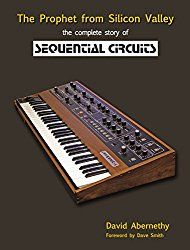



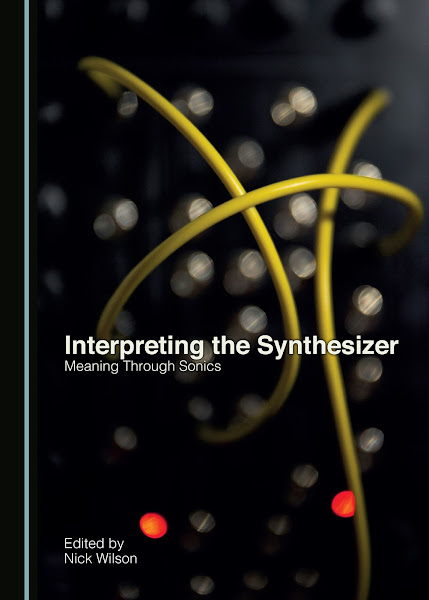
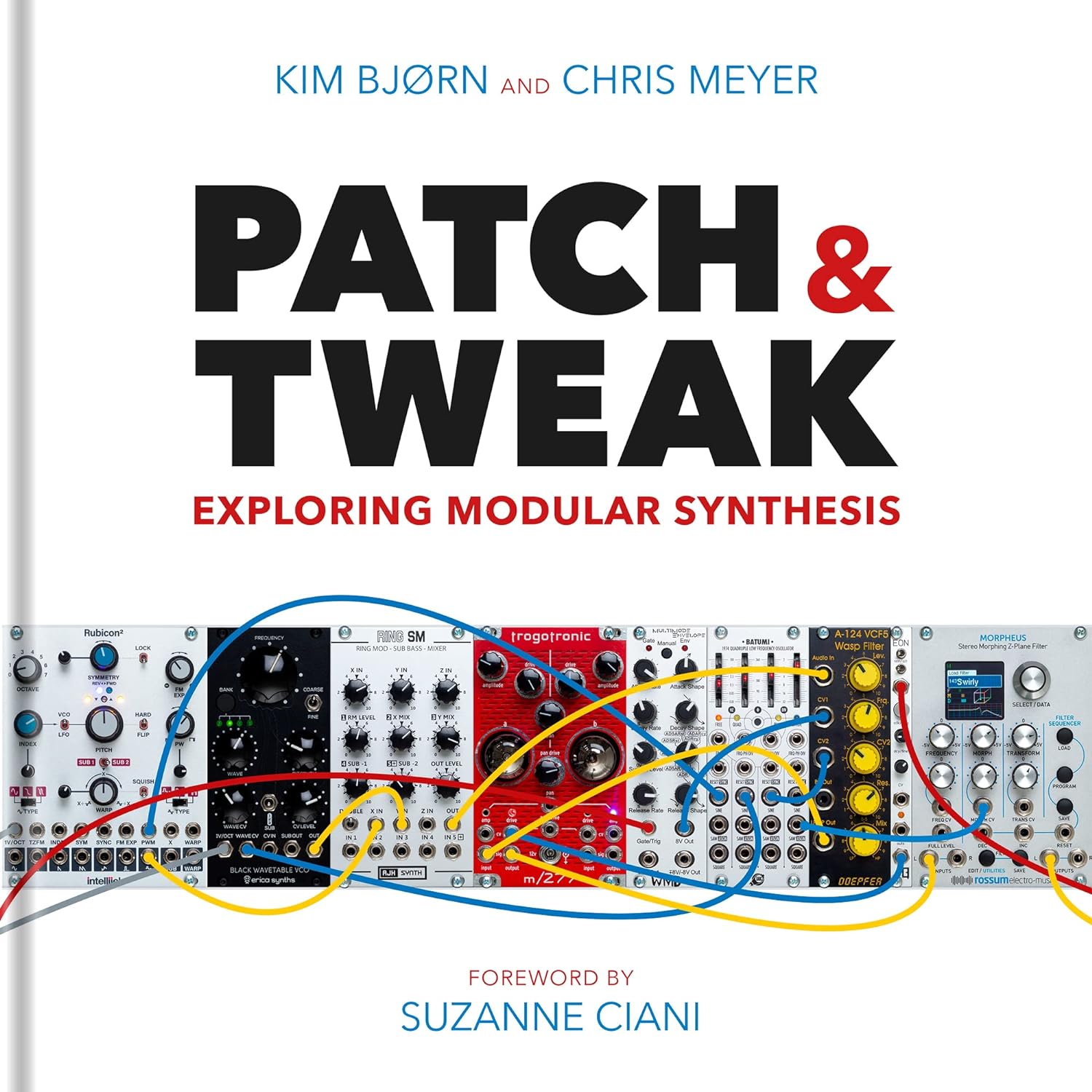

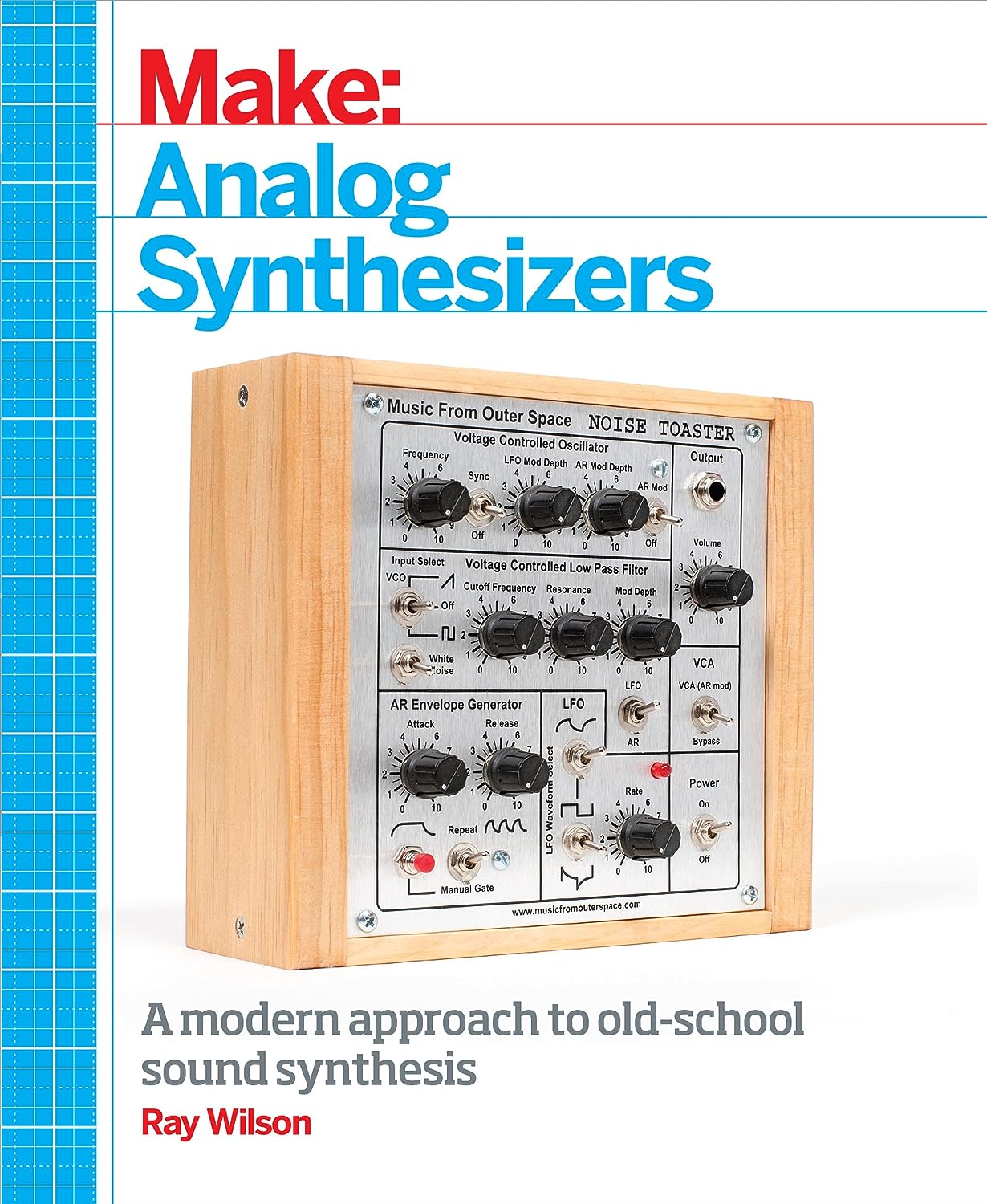

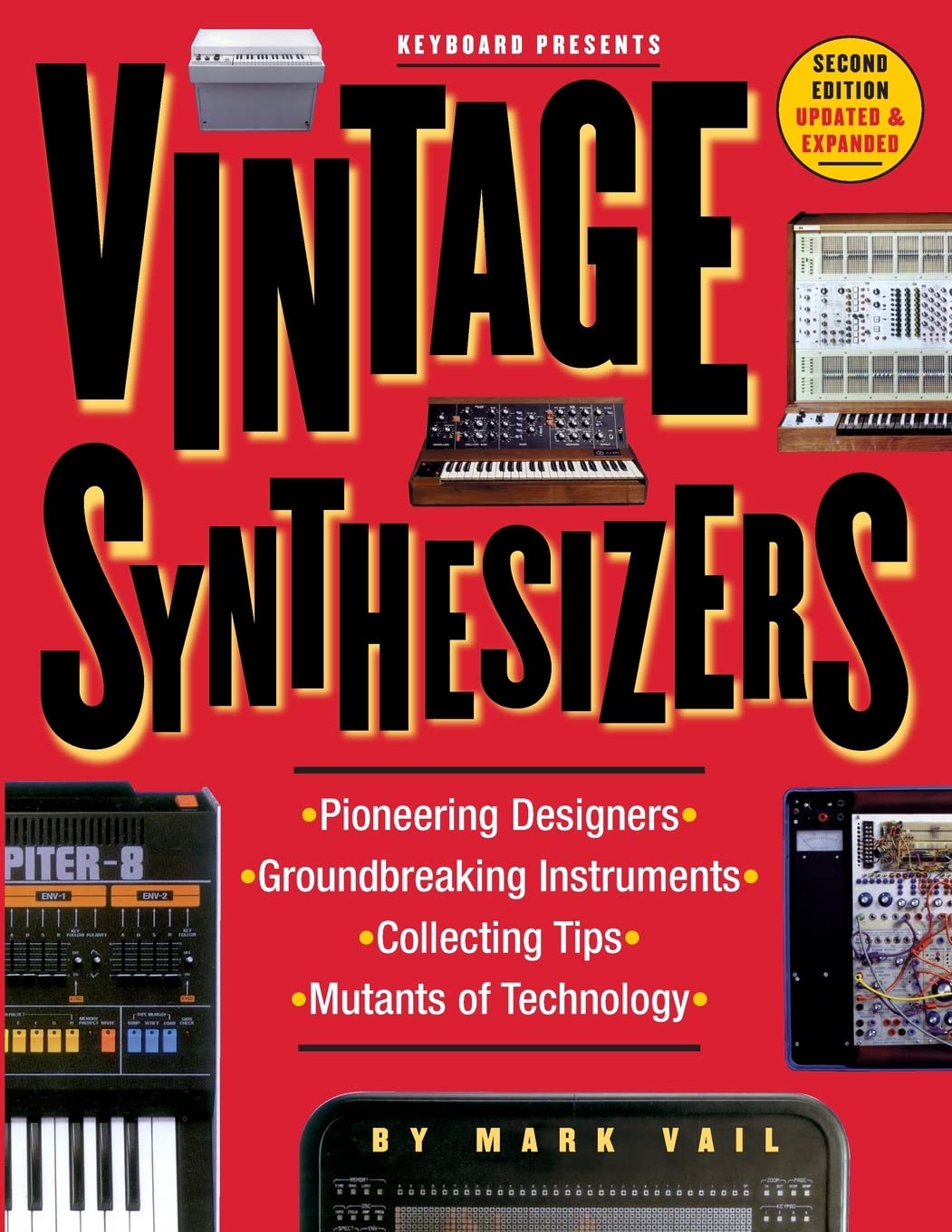
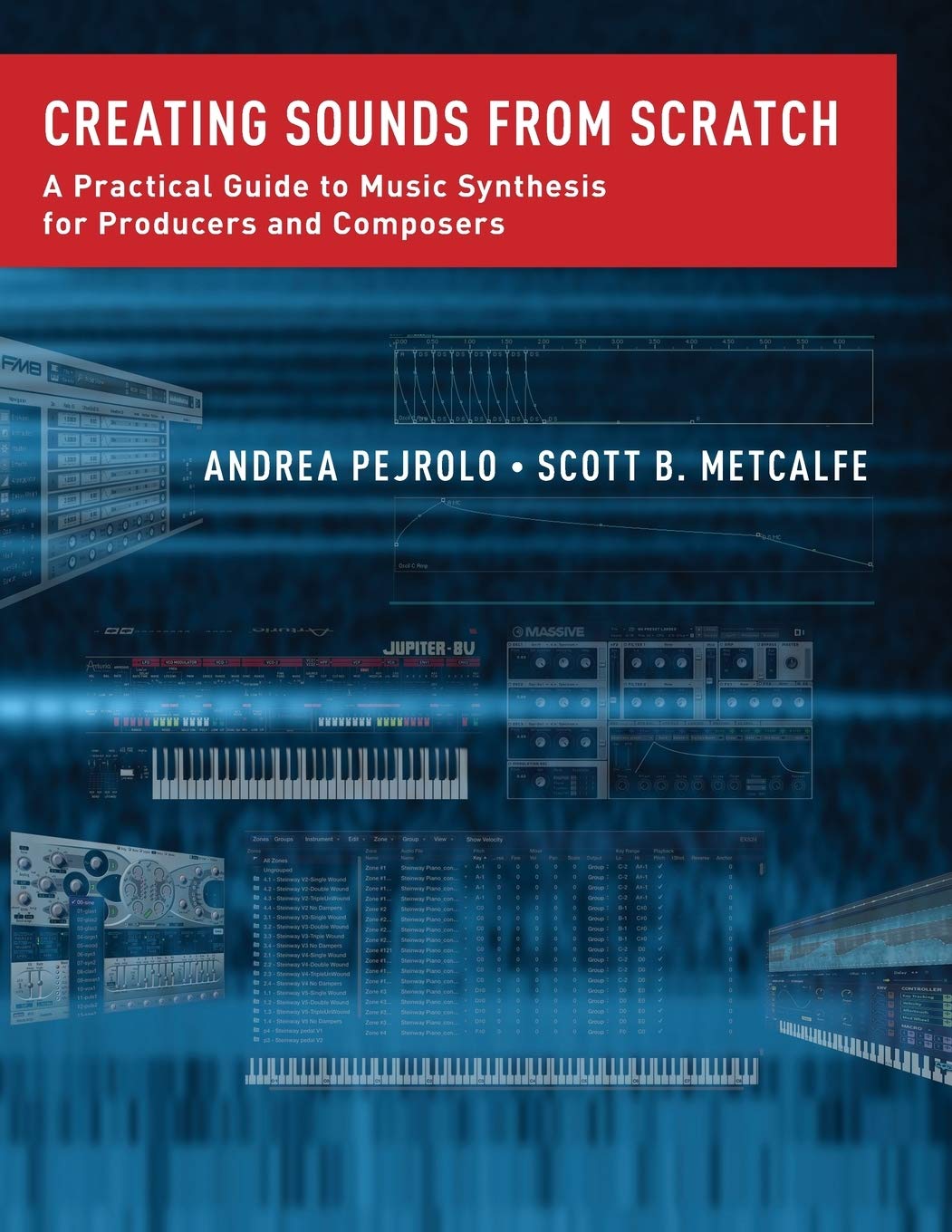
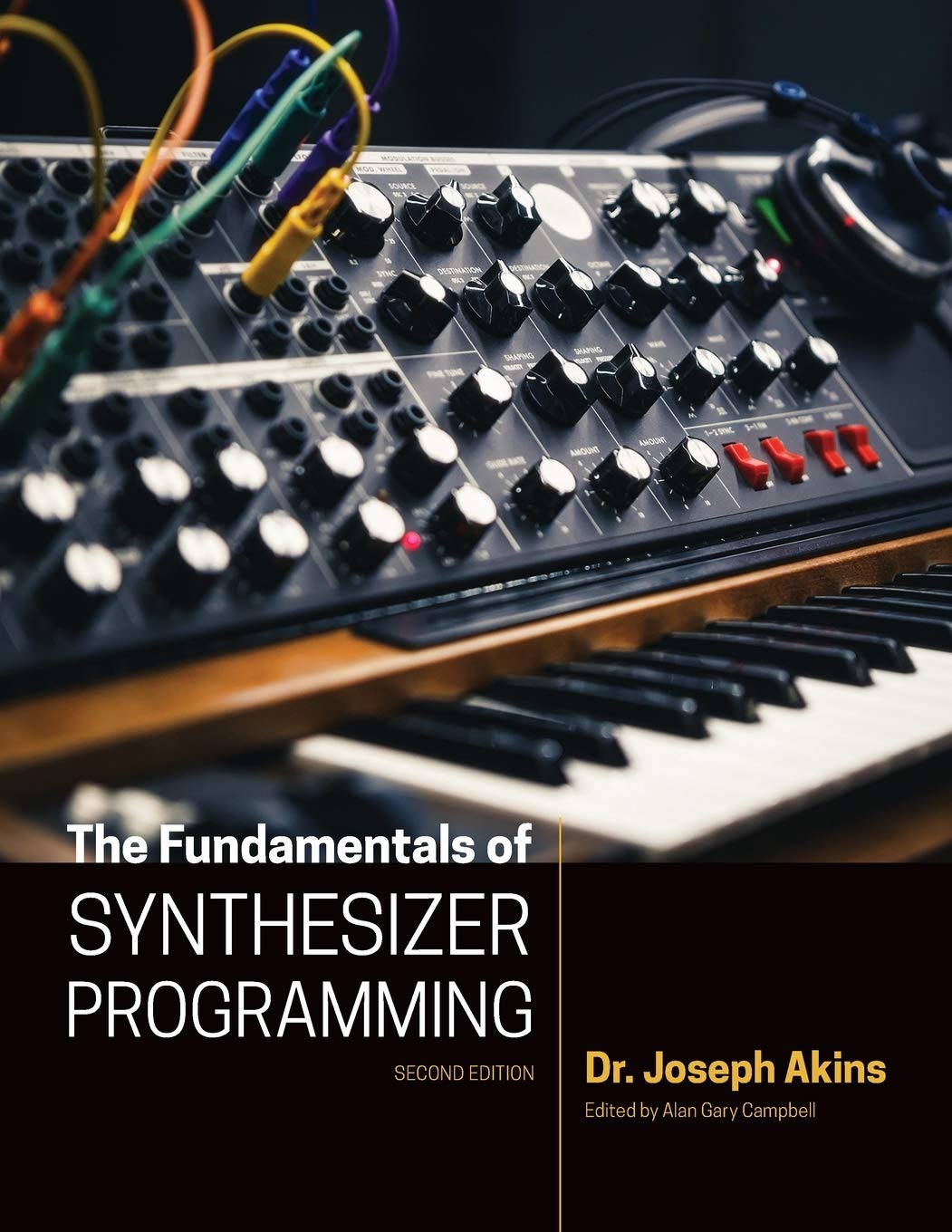

© Matrixsynth - All posts are presented here for informative, historical and educative purposes as applicable within fair use.
MATRIXSYNTH is supported by affiliate links that use cookies to track clickthroughs and sales. See the privacy policy for details.
MATRIXSYNTH - EVERYTHING SYNTH













© Matrixsynth - All posts are presented here for informative, historical and educative purposes as applicable within fair use.
MATRIXSYNTH is supported by affiliate links that use cookies to track clickthroughs and sales. See the privacy policy for details.
MATRIXSYNTH - EVERYTHING SYNTH












